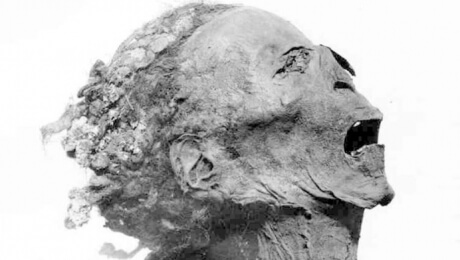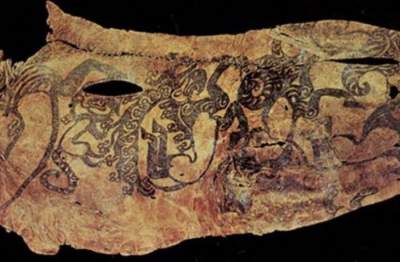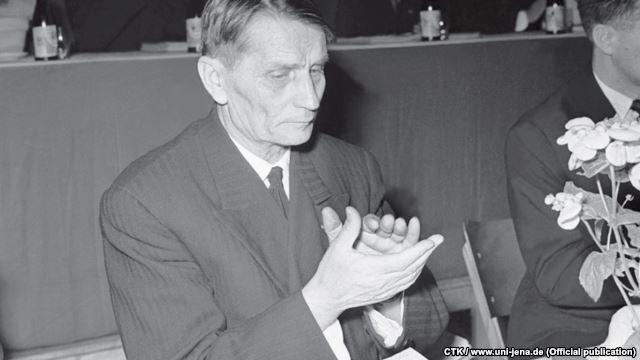 Nearly 3200 years ago, Pharaoh Ramses III was killed at the hands of the conspirators. Criminals quickly found, tried and punished according to Egyptian rules. The case is seemingly closed.
Nearly 3200 years ago, Pharaoh Ramses III was killed at the hands of the conspirators. Criminals quickly found, tried and punished according to Egyptian rules. The case is seemingly closed.
Three thousand years of investigative material gathered dust in the archives of world history, and Pharaoh led an ordinary afterlife. But in the mid-nineteenth century, Ramses III had come to the attention of the representatives of the new science of Egyptology. Learning to read ancient hieroglyphics, scientists have taken with enthusiasm to translate everything, writes vestige.
In 1865 he published a translation of the Turin legal papyrus. It turned out that this very entertaining document of the XII century BC, contains the materials of the trial of the conspirators, the names of the defendants and sentence imposed by the court. Contrary to the logic of detective investigations, the ending of the case of Ramses III was known to scientists before was found the actual corpse of the slain.
The mummy of Ramses III was found quite quickly, in 1881, just 15 years after the publication of the translation of the Turin papyrus. The Pharaoh was buried in Deir El-Bahri, tomb DB(TT)-320, in the company of fifty other kings, Queens, princes and princesses, priests and other representatives of the nobility – the tomb turned out to be a hiding place, where long ago moved dozens of mummies in an attempt to protect the precious remains from the ubiquitous robbers. (By the way, in 1998-2005, re-examination of the tomb TT-320 were engaged in a joint Russian-German archaeological expedition, the results of this work outlined in the book “the Royal cache and the history of the mysterious burial”).
In the 1880s Egyptologists, who knew the circumstances of the death of Ramses III, tried to examine the body, but are unable repellent the mummy – bandages of burial were so densely impregnated with resin that scientists considered this an error of embalmers. Mummy sent for storage in the Cairo Egyptian Museum and the Ramses III again was forgotten.
Story waited, when I will meet the right person and the right tools. Since 2002, the omnipresent and indefatigable “Egyptian Indiana Jones” Zahi Hawass (Zahi Hawass) masterfully uses the power of modern science and mass media, once again turning Egyptology on a fascinating detective and the source of the world sensations.
In the 2000s, Hawass began several projects to study the Royal mummies. Thus was discovered the mummy of Queen Hatshepsut identified the real cause of death of Tutankhamun. Open, excite the minds of ordinary people and scientists to this day. Recently “News.Science” told about the discovery of the secret room in the tomb of Tutankhamen (“who is the mummy? Why paleogenetics is an inexact science and Study of secret rooms in the tomb of Tutankhamen: all the details and background”).
Once the coroner has not escaped the mummies of the Royal cache TT-320. But before Ramesses III, scholars have engaged another person, the remains of which intrigued Egyptologists since the discovery of the body in 1886. We are talking about the mummy of “Unknown man E”, better known under the nickname spooky “Screaming mummy”.
The results of a study published in 2008 has forced scholars and pseudo-scientific audiences re-think the murder of Ramses III and the trial of the conspirators, described in the Turin legal papyrus. Hawass has put forward a reasonable supposition that the “Screaming mummy” is the Prince of Pentur, son of Ramses III, which was stirred up this whole mess of conspiracy and murder, known in history as the “harem conspiracy”. Then one of the younger wives of Ramses, TII (teye), intent to kill a spouse and to build on the throne of his son in the crawl indicated by the Pharaoh an heir. The plot failed only by half: the Pharaoh was killed, but the attackers caught, tried and sentenced to death when Ramses IV, legitimately inherited the throne of the father.
Write about the fate of Pantura occurs in the third of five long lists of convicts listed in the Turin papyrus: “… Pintur, who was called another name. He was mentioned because of the conspiracy, which he did with TIA, her mother, when she was in wait of speech with the women of the harem, to make rebellion against their Lord. He was represented before Butler to question him. They found him guilty. They left him on the spot. He killed himself”. (CIT. by I. M. Lourie, “Essays on ancient Egyptian law XVI — X centuries BC”)
From this account it follows that Pentaen – not the real name of the Prince (“…who was called another name”), and that upon conviction, he most likely was forced to commit suicide.
From the outset, the attention of scientists was attracted by the unusual method of mummification: a young man in his twenties was buried contrary to all the rules, as if it had committed a terrible offense and was given no hope for a decent afterlife. His internal organs were not extracted from the body is not completely removed moisture, balsaminaceae resin poured directly into the throat of the corpse, on top of the punishment the body was wrapped in unclean, according to the beliefs of the Egyptians, goat skin and left forever nameless. And yet it was unconventional, but the mummy from which the researchers concluded that the remains do not belong to a common criminal, with whom no body would not stand on ceremony, and noble person, punished for a terrible crime.
The expression of excruciating agony frozen on his face “Screaming mummy”, the scientists explained quite prosaic: it is not suffering of the dying of Pentura, and the post-mortem behavior of the mummies, which leans head.
Remained to conduct genetic tests to confirm the hypothesis on the relation of Ramesses III and “Unknown man E”. Genetics confirmed that with high probability “Unknown man E” is the son of Ramses III. Well, the ancient Egyptians knew the value of punishment: three thousand years the father and son were forced to endure each other’s company.
They even examined together. In 2012 in the medical journal the BMJ published the results of anthropological, forensic, radiological and genetic studies of the mummies of Ramesses III and Pintauro, the father and the son.
Examination by means of computed tomography (CT) suggested how the Prince was forced to commit suicide: the skin folds on the neck of the picture Pintura meet death by strangulation.
The tomograph has managed to penetrate and for the burial bandages of the mummy of Ramses III (take them still is impossible), revealing details of the murder of 3200 years ago. Scientists received confirmation of the history outlined in Turin legal papyrus before it was not entirely clear whether the Pharaoh died as a result of the conspiracy and how it happened.
“Broad and deep wound on the neck was inflicted with a sharp knife or other sharp blade. Incision damaged the trachea, esophagus and major blood vessels. Death was instantaneous”, said dryly the scientists in the scientific article published in The BMJ.
In the process of mummification of the terrible wound taken care of especially: the neck of the Pharaoh’s embalmers covered multilayer “scarf” made from strips of fabric inside the wound and put the wadjet – the amulet “eye of Horus”, who, according to legends, possessed healing powers, even after death.
All these details became known in 2012. Why is Ramses III remembered again in March 2016? Recently it became known fresh details about the old murder, which scientists literally sucked from the finger. The big toe of the Pharaoh.
In February 2016 the results of years of studies of the Royal mummies came in the form of a book “Scanning the pharaohs: CT examination of the Royal mummies of the New Kingdom epoch” (Scanning the Pharaohs: CT Imaging of the New Kingdom Royal Mummies). Authors Zahi Hawass and Sugar Salem, a radiologist at Cairo University.
In this book journalists and learned new heartbreaking details of the murder of Ramses III. It turned out that the killers were at least two. This conclusion was made by Sugar Salem: CT examination showed that the big toe on the leg of the Pharaoh was cut off by a weapon like axe or sword. As signs of wound healing were found, this means that it was put immediately before the death of the Pharaoh.
“The wound is anatomically distant from previously suffered wounds on the victim’s neck. The shape of the splintered bones of the toes indicates that the wound on his leg and the wound on her neck were inflicted by different weapons. Therefore, one of the men, armed with axe or sword, Pharaoh attacked the front, while the second killer, armed with a dagger or a knife, attacked from behind. Both killers acted simultaneously,” said Sugar-Salem in a letter to the publication Live Science.
The priests made great efforts to hide the unsightly absence of the thumb, so necessary in the afterlife. In the 1880s Egyptologists noticed excess amounts of resins, impregnated by the burial bandages of the Pharaoh. “It seems to me that the embalmers did this intentionally to mask the big secret: the missing toe,” said Salem.
These findings say a lot about human nature, the treachery of fate, the achievements of modern science and the efficiency of the judicial system of Ancient Egypt (underline). The conspiracy to murder the ruler is an integral part of world history, the Egyptians even started. Russia also did not remain aside. Such a course of events – a conspiracy, homicide, cruel punishment, and the list of killers, preserved for the ages – very reminiscent of an episode from Russian history: the assassination of Prince Andrei Bogoliubsky in 1174 and was found in December 2015 the list of his murderers, scrawled on the wall of the Spaso-Preobrazhensky Cathedral in Pereslavl-Zalessky (details in our article “less than 900 years: the list of killers of Prince Andrei Bogolyubsky”).
Photo from abc website.net.au








